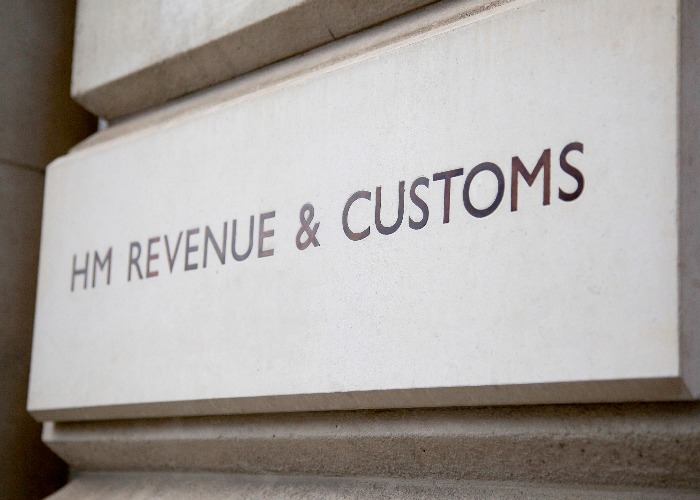NAO: three million may have paid the wrong tax thanks to HMRC call centre chaos

Watchdog says badly-timed job cuts caused HMRC’s service to "collapse" and could mean millions have paid the wrong tax.
Up to three million people may have paid the wrong tax last year after badly-timed job cuts at HM Revenue and Customs (HMRC).
That's according to a report by the National Audit Office (NAO), which has slammed the quality of service at HMRC over an 18-month period between 2014/15 and 2015/16.
During this period call waiting times also tripled, with many left waiting over an hour to speak to an advisor.
It’s estimated taxpayers wasted £97 million on the combined cost of calling up as well the economic cost of time spent waiting for their call to be answered and an advisor dealing with their query.
Job cuts
The NAO said HMRC’s poor performance was likely down to its decision to cut 11,000 staff between 2010 and 2014.
As part of HMRC’s strategy to persuade people to do their tax returns online, it anticipated needing fewer advisers to answer the phone. However, in 2013/14 when HMRC introduced two new services, automated telephony and paperless self-assessment, demand for telephone advice did not fall.
The NAO analysis found that the quality of service declined in 2014/15 when 5,600 staff were cut at a time when calls were not dropping off as expected.
Calls handled at HMRC fell to 71% in 2014/15 and over the first seven months of 2015/16 average waiting times tripled. This peaked at 47 minutes for self-assessment paper return callers getting in contact during the deadline week in October 2015, with some callers having to wait over an hour at busy times. This compares to an average waiting time of 10 minutes in 2012/13 and 2013/14.
The NAO estimates the overall cost to taxpayers calling the helpline both in terms of the cash cost of the call and the economic cost of their time increased 50% from £63 million in 2012/13 to £97 million in 2015/16
Though callers paid £2 million less in call costs when HMRC reduced call charges by moving to local-rate ‘03’ numbers in September 2013, the cost of the time wasted waiting to speak to an advisor more than offset this saving and the £257 million saved by reducing the cost of its personal tax operations (mainly through job cuts) between 2010/11 and 2014/15.
The NAO estimates that, for every £1 saved by HMRC, the taxpayer paid an extra £4.
Amyas Morse, head of the National Audit Office, said: ““HMRC’s overall strategy of using digitally enabled information to improve efficiency and deliver service in new ways make sense to the NAO. This does not change the fact that they got their timing badly wrong in 2014, letting significant numbers of call handling staff go before their new approach was working reliably."
Wrong tax
The chaos around call waiting times meant HMRC had to shift more staff to its call centres to help sustain service, but the NAO says this was at the cost of maintaining PAYE records.
The amount of outstanding discrepancies in tax records requiring investigation doubled from 2.4 million in March 2014 to 4.6 million in March 2015.
Of these 3.2 million were high priority cases, which the NAO states carries "a risk that employees will have paid the wrong amount of tax". By December 2015, after recruiting more staff HMRC had reduced unresolved PAYE items to below three million.
How to check you're on the right tax code
Getting back on track
The report concluded that HMRC needed to focus on improving its service. Morse said: “HMRC needs to move forward carefully and get their strategy back on track while maintaining, and hopefully improving, service standards”.
An NAO survey of customers using HMRC services found 58% rated the service as good or excellent, 21% as average and 21% rated it as poor or terrible. Satisfaction was highest with those whose most recent contact with HMRC had been online, and lowest among those whose most recent contact had been by phone.
HMRC said its service levels had improved since the period looked at in the NAO report. Over the last six months it claimed call waiting times had averaged six minutes.
Responding to the report, Ruth Owen, HMRC’s Director General for Customer Services said: “We recognise that early in 2015 we didn’t provide the standard of service that people are entitled to expect and we apologised at the time. We have since fully recovered and are now offering our best service levels in years.
“Over the past six months we’ve consistently answered calls in an average of six minutes, and have launched new online tax accounts and webchat for everyone, enabling customers to manage their tax affairs wherever and whenever they want.
“There’s never been a better or more convenient service for our customers.”
Compare travel insurance with loveMONEY
Read these next:
How to check you're on the right tax code
HMRC digital personal tax accounts: how it will affect your tax return and personal information
Comments
Be the first to comment
Do you want to comment on this article? You need to be signed in for this feature